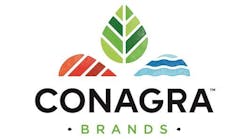As COVID-19 lingers on, Americans are inevitably expanding their travels and interactions, both business and personal. Some are basing their decisions on the “statistics” found through Google, Bing or even Facebook. But how accurate are these statistics – really?
How does a business, like your food or beverage business, make decisions on office re-openings, travel for employees or threshold levels for risk mitigation at facilities? Where are you getting your data and how useful is it?
To assist with such decision-making and answering the hard questions, The Acheson Group (TAG), led by a former FDA associate commissioner of foods, compiles and leverages weekly data from reliable, science-based sources to create a predictive 50-State Risk Matrix.
This matrix, developed by TAG’s Ben Miller, takes into account several variables, including social distancing metrics, effective rates of transmissions, test positive rates and case rates to calculate an outbreak index that enables accurate analysis and tracking of trends at the state and county level, throughout the U.S. These matrices are updated each week.
For example:
- One matrix compares the week-over-week rates of not only testing but of the percentage of those tests that are positive for each state, and the rate of increase or decrease from the week before. By analyzing this data week to week, you can see the trajectory for the predictive analytics and determine the amount of risk in one’s home state or state to which one wishes to travel.
- The matrix also considers case rates per 100,000 persons to create a predictive analysis (over time) that can compare different areas on the same playing field.
- In another matrix, TAG projects relative risk of states by comparing the week-to-week social distancing/movement of people against outbreak data to determine which states are headed toward high risk – or have shown reduced risk.
- In addition to assessing state-level risk, the matrices can be customized to specific counties or expanded to country-level assessments as well.
While meat packing plants garnered lots of negative publicity in the early months for coronavirus transmission, the virus did not start in those plants, Miller points out. "The cases were coming in from the community, some workers first were getting infected there," he says. Better data at the local level and back at corporate headquarters could have led to better interventions and decision-making.
Some examples of the matrices in use:
- A large multinational company is using the matrix to monitor if "mission-critical" facilities are located in a highest risk state. This allows them to track prevention measures and increase surveillance for illness in their workforce in these facilities.
- Another large multinational company headquartered in the U.S. is using the data to guide their phased office reopening, looking at the sustained movement of particular states in the matrix as part of their decision-making process.
- A global logistics company is using the matrix to determine when to safely reopen its European offices. They have also asked TAG to create more specific analyses of locations in the UK and continental Europe that monitor weekly case rate data and establish thresholds for action if case-rates in cities where they have operations increase above-set trigger levels.
- Many companies are using the data to monitor states that are in the "highest risk" quadrant. If a state moves into and stays in the highest risk quadrant for two or three weeks, companies can use this information to increase monitoring for symptomatic employees, increase employee education about exposures happening outside of the facility and make other operational changes that reduce the risk of transmission in the facility.
Many of these companies have asked TAG to develop location-specific matrices that include cities and counties where they have operations so they can compare the risk among the facilities and plants in their specific portfolio. This includes a company that has requested state-level data for several countries in Central and South America.
In addition to being an infectious disease expert, Dr. Miller is the board chair for a charter school in Castle Rock, Minn. His matrices have helped inform the school board on how to structure and monitor its current hybrid approach to instruction.
Key points of the matrices are included in each week’s Wednesday edition of TAG’s COVID-19 Update e-newsletter, with customized analyses available through TAG’s COVID-19 Retainer Package. For more information or to subscribe to the free e-newsletter, visit www.achesongroup.com/covid-19.


